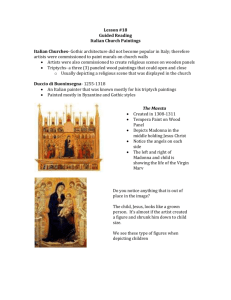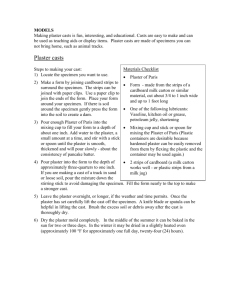Properties of a New Type of Plaster Containing Phase-Change Material
advertisement
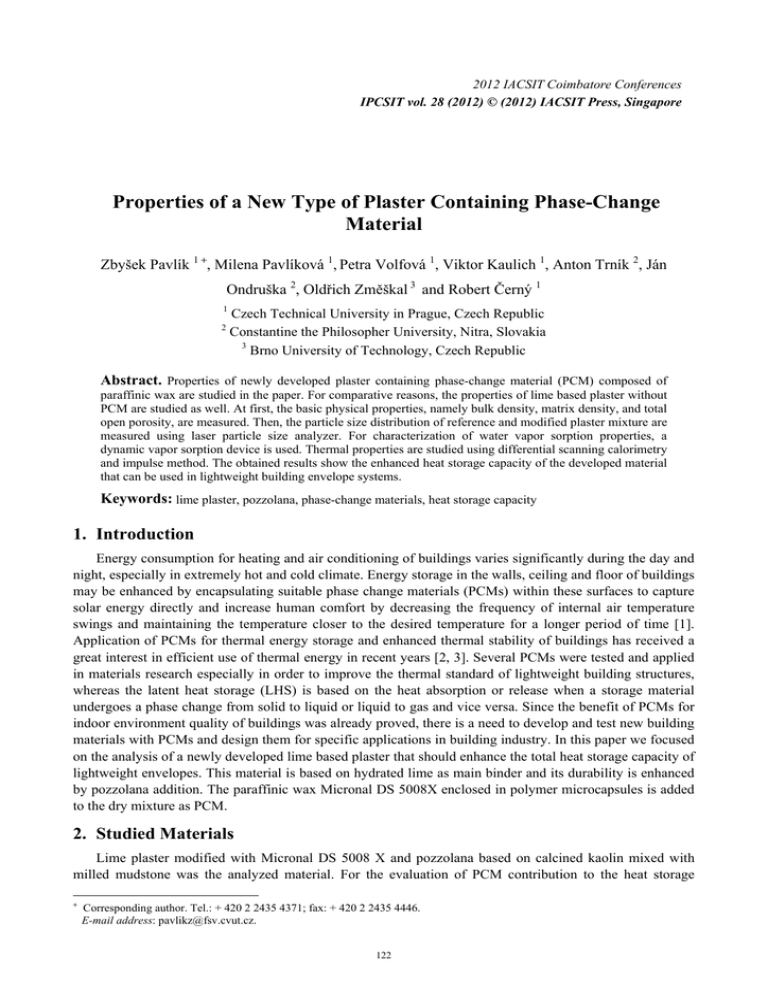
2012 IACSIT Coimbatore Conferences IPCSIT vol. 28 (2012) © (2012) IACSIT Press, Singapore Properties of a New Type of Plaster Containing Phase-Change Material Zbyšek Pavlík 1 +, Milena Pavlíková 1, Petra Volfová 1, Viktor Kaulich 1, Anton Trník 2, Ján Ondruška 2, Oldřich Změškal 3 and Robert Černý 1 1 2 Czech Technical University in Prague, Czech Republic Constantine the Philosopher University, Nitra, Slovakia 3 Brno University of Technology, Czech Republic Abstract. Properties of newly developed plaster containing phase-change material (PCM) composed of paraffinic wax are studied in the paper. For comparative reasons, the properties of lime based plaster without PCM are studied as well. At first, the basic physical properties, namely bulk density, matrix density, and total open porosity, are measured. Then, the particle size distribution of reference and modified plaster mixture are measured using laser particle size analyzer. For characterization of water vapor sorption properties, a dynamic vapor sorption device is used. Thermal properties are studied using differential scanning calorimetry and impulse method. The obtained results show the enhanced heat storage capacity of the developed material that can be used in lightweight building envelope systems. Keywords: lime plaster, pozzolana, phase-change materials, heat storage capacity 1. Introduction Energy consumption for heating and air conditioning of buildings varies significantly during the day and night, especially in extremely hot and cold climate. Energy storage in the walls, ceiling and floor of buildings may be enhanced by encapsulating suitable phase change materials (PCMs) within these surfaces to capture solar energy directly and increase human comfort by decreasing the frequency of internal air temperature swings and maintaining the temperature closer to the desired temperature for a longer period of time [1]. Application of PCMs for thermal energy storage and enhanced thermal stability of buildings has received a great interest in efficient use of thermal energy in recent years [2, 3]. Several PCMs were tested and applied in materials research especially in order to improve the thermal standard of lightweight building structures, whereas the latent heat storage (LHS) is based on the heat absorption or release when a storage material undergoes a phase change from solid to liquid or liquid to gas and vice versa. Since the benefit of PCMs for indoor environment quality of buildings was already proved, there is a need to develop and test new building materials with PCMs and design them for specific applications in building industry. In this paper we focused on the analysis of a newly developed lime based plaster that should enhance the total heat storage capacity of lightweight envelopes. This material is based on hydrated lime as main binder and its durability is enhanced by pozzolana addition. The paraffinic wax Micronal DS 5008X enclosed in polymer microcapsules is added to the dry mixture as PCM. 2. Studied Materials Lime plaster modified with Micronal DS 5008 X and pozzolana based on calcined kaolin mixed with milled mudstone was the analyzed material. For the evaluation of PCM contribution to the heat storage + Corresponding author. Tel.: + 420 2 2435 4371; fax: + 420 2 2435 4446. E-mail address: pavlikz@fsv.cvut.cz. 122 capacity of developed material, the reference plaster without PCM addition was studied as well. The applied pozzolana material is very fine, having specific surface area 14.56 m2/g and D50 4.09 μm. Micronal DS 5008X is product of company BASF SE, Germany. It is fine powdered material based on parrafinic wax encapsulated in polymer spherical microcapsules. Lime hydrate was produced by the lime kiln Čertovy schody, Inc., Czech Republic, whereas the silica sand was coming from sand pit Hlavačov, Czech Republic. The water/dry substances (w/d) ratio was slightly modified in order to keep the workability of fresh mixtures on the same level. Composition of the studied plasters is given in Tab. 1. The samples were cast from the fresh mixture of studied plasters into the moulds having dimensions of 70/70/70 mm, 50/50/50 mm and 20/20/5 mm. Table. 1: Composition of studied materials. 1.5 Pozzolana (kg) 1.0 Sand 0 – 4 mm (kg) 7.5 Micronal DS 5008X (kg) 0.0 1.5 1.0 7.5 0.5 Plaster w/d Lime hydrate (kg) reference 0.21 with PCM 0.24 3. Experimental 3.1. Measurement of basic material properties At first, powder density and particle size distribution of Micronal were measured. The powder density was measured gravimetrically, weighing the known mass of material in the measuring cylinder. The particle size distribution was measured on laser diffraction principle using the device Analysette 22 Micro Tec plus. The particle size distribution was measured also for the reference dry mixture, as well as for the mixture with Micronal addition. For the researched plasters, measurements of bulk density, matrix density, and total open porosity were performed. The experiments were done on 5 cubic samples of side 50 mm. The relative expanded uncertainty of applied testing method was 5% and was mainly due to material nonhomogeneity. Bulk density was determined from the measurement of sample sizes (using digital length meter) and its dry mass. The matrix density was accessed by helium pycnometry using apparatus Pycnomatic ATC (Thermo Scientific). The accuracy of the gas volume measurement using this device is ± 0.01% from the measured value, whereas the accuracy of used analytical balances is ± 0.0001 g. On the basis of bulk density and matrix density measurements, the total open porosity was calculated. 3.2. Measurement of water vapor sorption properties To investigate the effect of PCM addition on water vapor adsorption capacity, the measurement of sorption and desorption isotherms was done using the dynamic sorption device DVS-Advantage (Surface Measurement Systems). The instrument measures the uptake and loss of vapor gravimetrically using highly precise balances having resolution of 10 μg. The vapor partial pressure around the sample is generated by mixing the saturated and dry carrier gas streams using electronic mass flow controllers. The humidity range of the instrument is 0 – 98% with accuracy ± 0.5% at temperatures 5 – 60°C. 3.3. Measurement of heat transport parameters Among the heat transport properties, measurement of thermal conductivity and thermal diffusivity were done. For that purpose, device ISOMET 2104 [4, 5] working on dynamic measurement principle was used. The measurement is based on the analysis of the temperature response of the analyzed material to heat flow impulses. The measurements were performed in laboratory conditions at constant temperature 23˚C ± 1˚C and relative humidity 30% ± 5%. The samples had cubic shape of dimensions 70/70/70 mm, whereas 5 samples of each material were tested. 3.4. Differential scanning calorimetry Differential scanning calorimetry (DSC) analysis was performed using apparatus DSC 822e (Mettler Toledo) with the cooling device Julabo FT 900. The measurements were performed for the Micronal DS 5008 X, the reference plaster and plaster modified by PCM addition. For the measurement, the particular 123 samples were first crushed in laboratory mill. The following temperature regime was applied: 5 minutes of the isothermal regime; cooling of 10°C/min from the temperature 40°C to the temperature – 10°C; 5 minutes of the isothermal regime; heating of 10°C/min from the temperature -10°C to the temperature 40°C; 5 minutes of isothermal regime. On the basis of DSC analysis, the temperature of the phase transition was accessed, as well as the temperature dependent specific heat capacity. 4. Results and Discussion Figures 1 – 3 show the particle size distribution of the studied materials measured by laser diffraction. Here, the very fine particle size distribution of Micronal PCM was observed. We can see that the highest amount of its particles was around 10 μm. The reference plaster exhibited maxima of particles at 5 and 90 μm. The particle size distribution of plaster mixture modified by PCM was only slightly affected by the Micronal PCM addition. Fig. 1: Particle size distribution of Micronal DS 5008 X. Fig. 2: Particle size distribution of reference plaster dry mixture. Fig. 3: Particle size distribution of plaster with Micronal addition. Basic material properties of investigated materials are given in Tab. 2. We can see very low powder density of Micronal PCM that affected the matrix density and bulk density of the plaster modified by PCM 124 addition. The total open porosity of the modified plaster was in comparison with the reference plaster about 20% higher, which was in accordance with its higher w/d ratio. Table. 2: Basic physical properties of studied materials. Material Micronal DS 5008X Powder density (kg/m3) 359 reference plaster plaster with PCM 1.5 Bulk density (kg/m3) - Matrix density (kg/m3) - Total open porosity (-) - 1 861 2 605 28.6 1 593 2 430 34.4 Sorption and desorption isotherms of researched materials are given in Fig. 4. We can see that the Micronal DS 5008 X had only slightly higher hygroscopicity in comparison with the reference plaster. The accumulation of water vapor molecules in the developed plaster with PCM addition was slightly enhanced in comparison with the reference material. This corresponded with both the slightly higher hygroscopicity of Micronal DS 5008 X and the higher open porosity of the material with PCM. Fig. 4: Sorption and desorption isotherms of studied materials. Results of impulse method measurements are presented in Table 3. We can see much lower thermal conductivity of the developed plaster in comparison with the reference plaster. This finding corresponds with the results of total open porosity measurement and may be attributed on one hand to the higher amount of batch water in composition of the developed plaster and on the other to the low thermal conductivity of Micronal capsules. Table. 3: Thermal properties of studied materials. refence plaster Thermal conductivity (W/mK) 0.86 Thermal diffusivity (m2/s) 0.54·10-6 plaster with PCM 0.55 0.34·10-6 Material Figure 5a, b describes the data obtained within the DSC analysis. The data were graphed using the STARe SW 9.1 software that controlled also the DSC device. The temperature of the phase change of the Micronal PCM during the cooling process was 19.45°C and 26.97°C during heating. For the modified plaster exposed to the cooling process we measured temperature of liquid-solid transition equal to 22.63°C. The solid-liquid transition of modified plaster was detected at 26.31°C. The measured temperatures of phase changes are beneficial for the LHS in the developed material. The temperature dependent apparent specific heat capacities of the developed and reference plaster during heating are presented in Figure 6a, b. Here, high increase of the specific heat capacity at the 125 temperature close to the PCM phase transition was registered for the PCM modified plaster. In comparison with the reference plaster, the newly developed plaster exhibited higher apparent specific heat capacity in the whole studied temperature range. Fig. 5: a) Heat flow during the heating of Micronal DS 5008 X Fig. 6: a) Specific heat capacity of the reference plaster b) Heat flow during the heating of plaster with PCM b) Specific heat capacity of plaster with PCM. 5. Conclusions The tests presented in the paper revealed the positive effect of PCM incorporation on the thermal performance of the modified lime-based plaster. The phase transitions of PCM caused substantial latent heat storage in dependence on temperature exposure of the material what is very promising for the practical application of the plaster in lightweight building envelopes, where the heat accumulation is, typically, very low. 6. Acknowledgements This research has been supported by the Czech Ministry of Education, Youth and Sports, under project No. MSM 6840770031. 7. References [1] A. M. Khudhair, and M. M. Farid. A review on energy conservation in building applications with thermal storage by latent heat using phase change materials. Energ. Cons. Manag. 2004, 45: 263-275. [2] Y. Zhong, Q. Guo, S. Li, J. Shi, and L. Liu. Heat transfer enhancement of paraffin wax using graphite foam for thermal energy storage. Sol. Energ. Mat. Sol. C 2010, 94: 1011-1014. [3] A. Sharma, V. V. Tyagi, C. R. Chen, and D. Buddhi. Review on thermal energy storage with phase change materials and applications. Renew. Sust. Energ. Rev. 209, 13: 318-345. [4] M. Jiřičková, Z. Pavlík, L. Fiala, and R. Černý. Thermal Properties of Mineral Wool Materials Partially Saturated by Water. Int. J. Thermophys. 2006, 27: 1214-1227. [5] Z. Pavlík, E. Vejmelková, L. Fiala, and R. Černý. Effect of Moisture on Thermal Conductivity of Lime-Based Composites. Int. J. Thermophys. 2009, 30: 1999-2014. 126

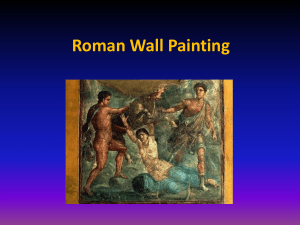
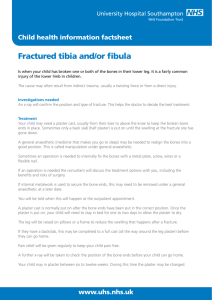
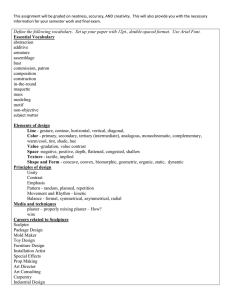
![First Aid Training : Bronze [Power Point]](http://s2.studylib.net/store/data/005424634_1-e0b0e5e602f7c1666ebc2e9ff3f4a1b5-300x300.png)
